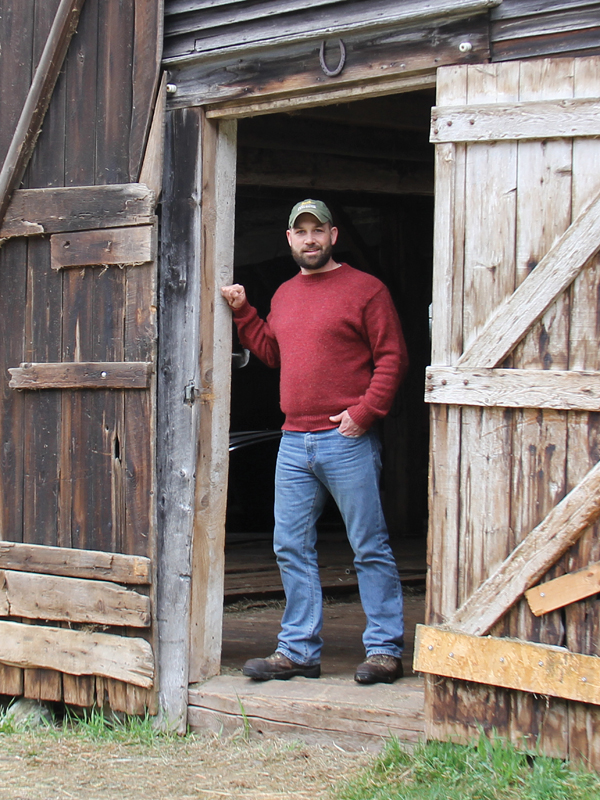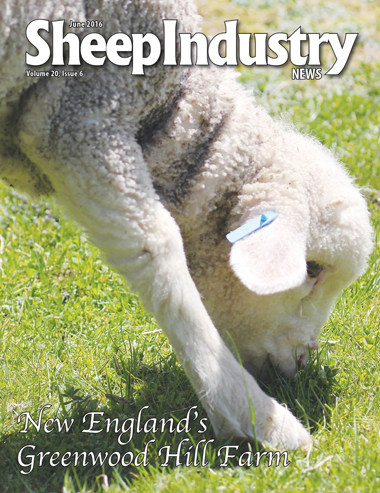Young Entrepreneurs: Joe & Megan Emenheiser
Like many getting into agriculture in Vermont, Joe and Megan Emenheiser call a historic dairy operation home. There are plenty of projects around the 60-acre place, but the biggest is preserving and renovating an old barn to fit their Suffolk sheep operation. It’s a slow process since Joe works full time as the state’s extension livestock specialist.
We just moved here in October of last year. We didn’t have any firewood or any hay, so we’ve just been trying to stay ahead of the eight ball so far. Fortunately, we had a mild winter and that allowed us to get some stuff done and get caught up without too much hardship.
 I’ve had sheep since 1993. It’s a long story. I started this Suffolk breeding program in 2002 and have been trying to make something that is easier keeping and more adaptable to grass systems. Also, I need more muscling and finish at a younger age and a lighter carcass weight because that’s what our ethnic markets demand. Through graduate school and all the different moves, I’ve had to farm sheep out. At one point, I sold most of my ewes and leased a bunch of rams. Now I’m in the process of building a flock back up from daughters of those rams that I leased out. On commercial farms I managed, I would take my Suffolks there and run them as a sub-flock, using the rams as commercial sires. I had to get creative through the years to keep it going. We’re finally landing in a place where we can really settle in.
I’ve had sheep since 1993. It’s a long story. I started this Suffolk breeding program in 2002 and have been trying to make something that is easier keeping and more adaptable to grass systems. Also, I need more muscling and finish at a younger age and a lighter carcass weight because that’s what our ethnic markets demand. Through graduate school and all the different moves, I’ve had to farm sheep out. At one point, I sold most of my ewes and leased a bunch of rams. Now I’m in the process of building a flock back up from daughters of those rams that I leased out. On commercial farms I managed, I would take my Suffolks there and run them as a sub-flock, using the rams as commercial sires. I had to get creative through the years to keep it going. We’re finally landing in a place where we can really settle in.
I’ve always been a livestock breeder. When I was little – before I even started school – we had a stream in the front yard and I had it dammed up with different groups of minnows. I had a cat that I trained to catch pigeons in the top of the barn and I would raise them and breed different colors and shapes and sizes. These were fun experiments long before I even knew what genes were.
With sheep, I started out with Suffolk cross lambs as show lambs from a commercial producer who did not breed for the show ring. He assured us they wouldn’t place very well and he was right. But through the years, he always emphasized to me that they needed to be productive. When I got exposed to the commercial sheep industry, I thought that was probably the most noble thing to breed sheep for. I’d been in 4-H and got burned out on the show types that weren’t productive. The issues I had to put up with to produce animals that won weren’t the types of things that I was willing to do long term.
When I was 12 or 13, I started shearing sheep for other people. One of my deals at the time was that instead of getting paid to shear, I got ewe lambs from the producers. So, I had a little bit of everything. From long wool breeds to fine wool breeds and all kinds of crosses. I learned a lot about breeds and adaptability, as well as diseases, since I was pulling all these sheep in from different places. But I just always liked Suffolks and how they look. I like the big, floppy ears. When there are 50 of them in a pasture running toward you, it’s hard to beat. Plus, there’s no rivaling a good Suffolk ram if you’re trying to make a living with sheep.
If you can design a system where your work and your personal passions complement each other, then you have the best of both worlds. I’m not sure I’ve fully mastered that yet, but that’s the goal. If nothing else, it takes the pressure off of some of the agricultural challenges of having a viable farm. There’s no way with 30 ewes that I could make it work without an off-farm income. By breeding for and selling commercial rams, I can play a role in the industry even at this scale.
Some of the rams are sold as terminal sires to commercial farms we’ve worked with in the past. I’m slowly trying to increase awareness of the terminal sire model in New England. I think that it’s a system these smaller, fragmented flocks can use to improve efficiency and output if they give it a chance. Being a terminal sire producer and trying to educate people about terminal sire models, I have to be careful that I’m not just promoting my own program. I would love it if there were 10 other people doing the same thing that I am here. But at the same time, if I didn’t do this, I would have less credibility as a livestock specialist. I’ve done everything from working on commercial operations to working as a butcher and a shearer. All of those experiences have given me a background that works hand-in-hand with what I’ve done in academia. It makes you aware of the bigger picture.
It’s just in my blood at this point. When I come home, this is what I want to do. I want to spend time with the sheep and unwind from whatever happened that day. Even when I got home at 9 o’clock last night, it was nice to come out and check the sheep.
If you look at our history, Vermont was a strong wool producing state. There were 1.6 million sheep here in the 1840s. We don’t need to get back to those levels, but there is a lot of potential to increase sheep numbers in these hillside farms and be close to the people who are eating the product.


